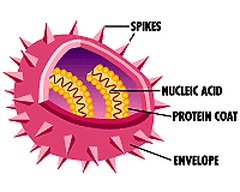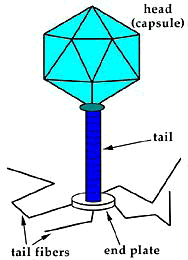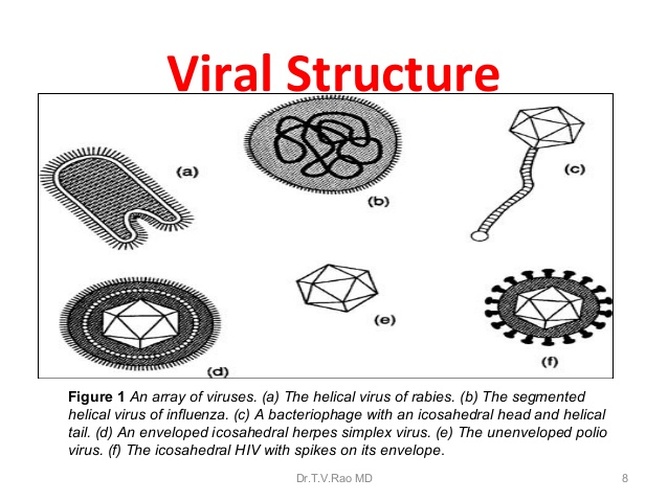Structures of Viruses

All viruses consist of two major components - proteins and nucleic acids, though some also have an exterior spiky layer called an envelope.
Proteins form a protective coating called the capsid/capsule, which contains the nucleic acid of the viral genome within it.
Nucleic acids are either the DNA or RNA of the virus and are found within the capsid.
Proteins form a protective coating called the capsid/capsule, which contains the nucleic acid of the viral genome within it.
Nucleic acids are either the DNA or RNA of the virus and are found within the capsid.
|
The diagram to the right displays a typical virus shape for bacteriaphages, which includes a head containing the capsid and nucleic acid, and a tail which is a hollow tube for the nucleic acid to pass through during infection of a cell. The tail fibers assist the virus in attaching to the host cell. Viruses come in diverse types but there are a limited number of basic designs -some are generally spherical but with icosahedral surfaces, such as the influenza and common cold viruses, and some are oblong or rod shaped with distinct heads and tails. |


